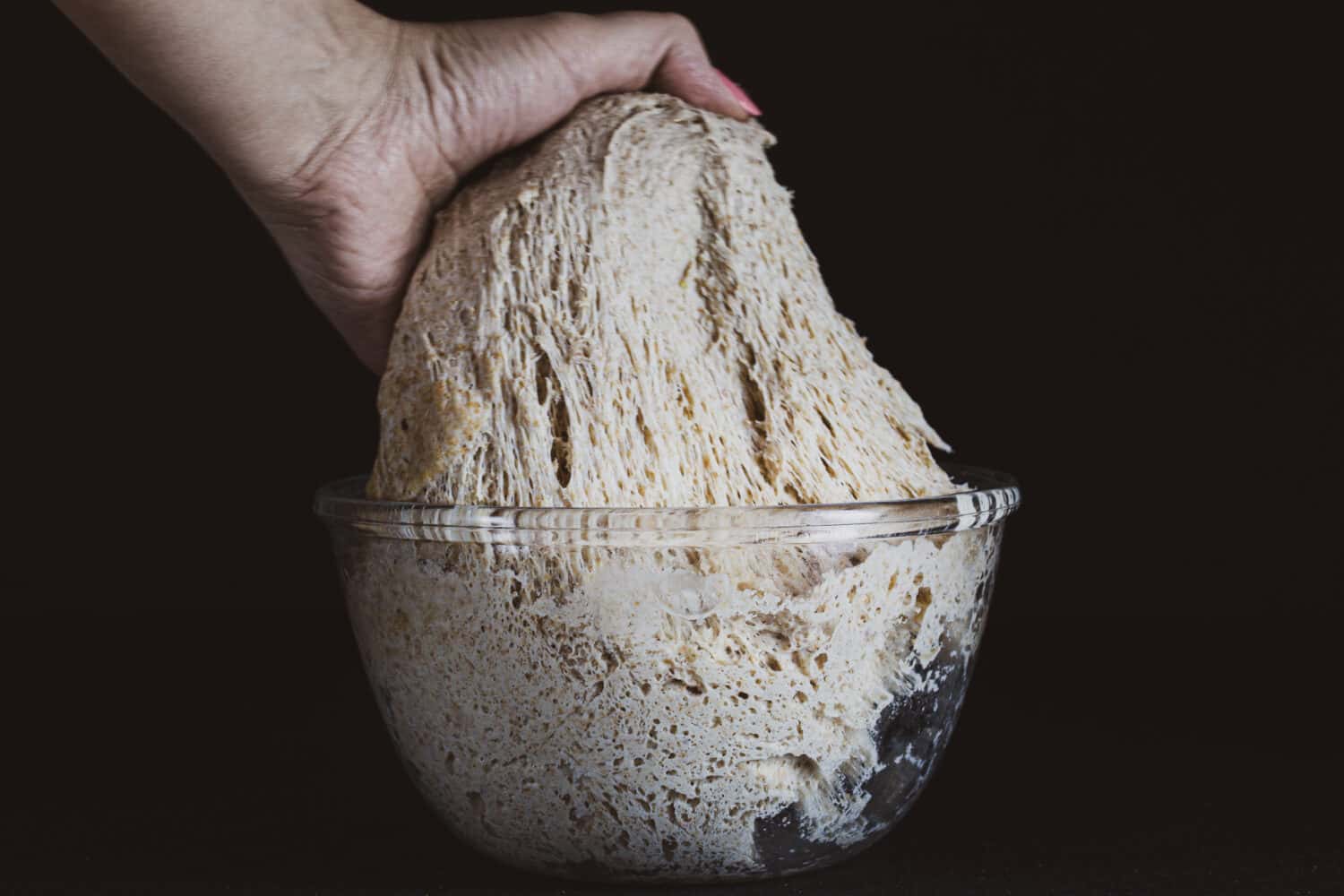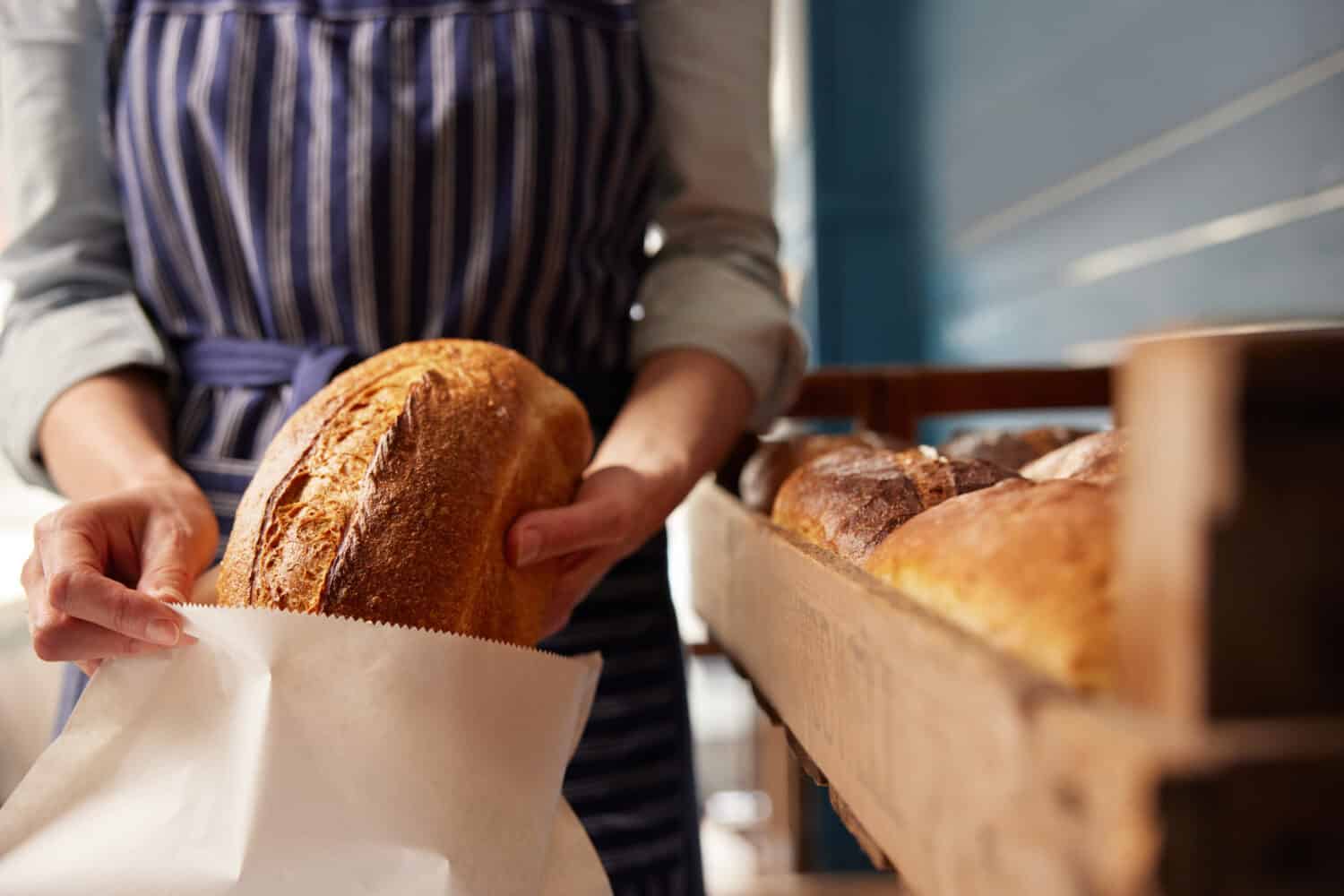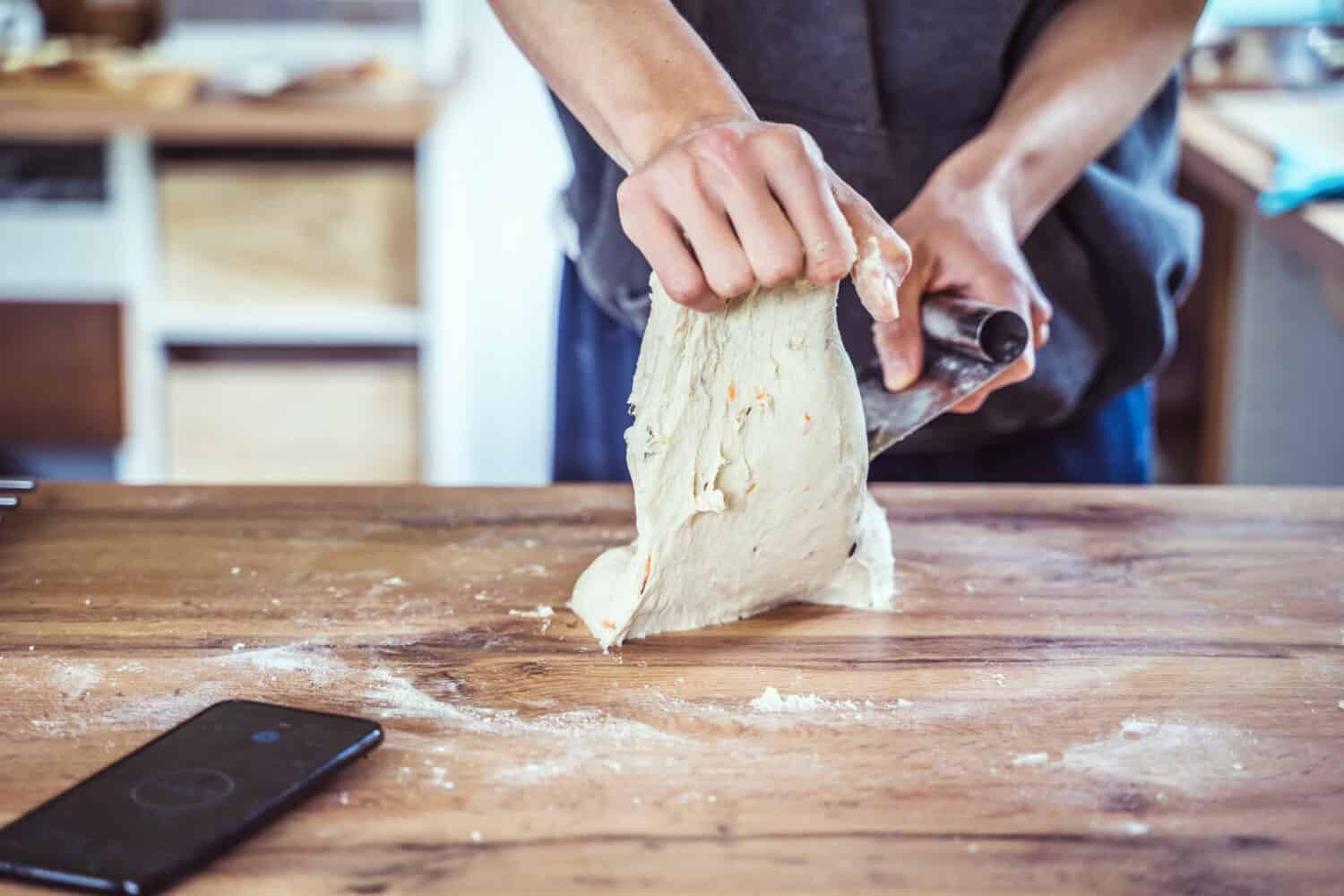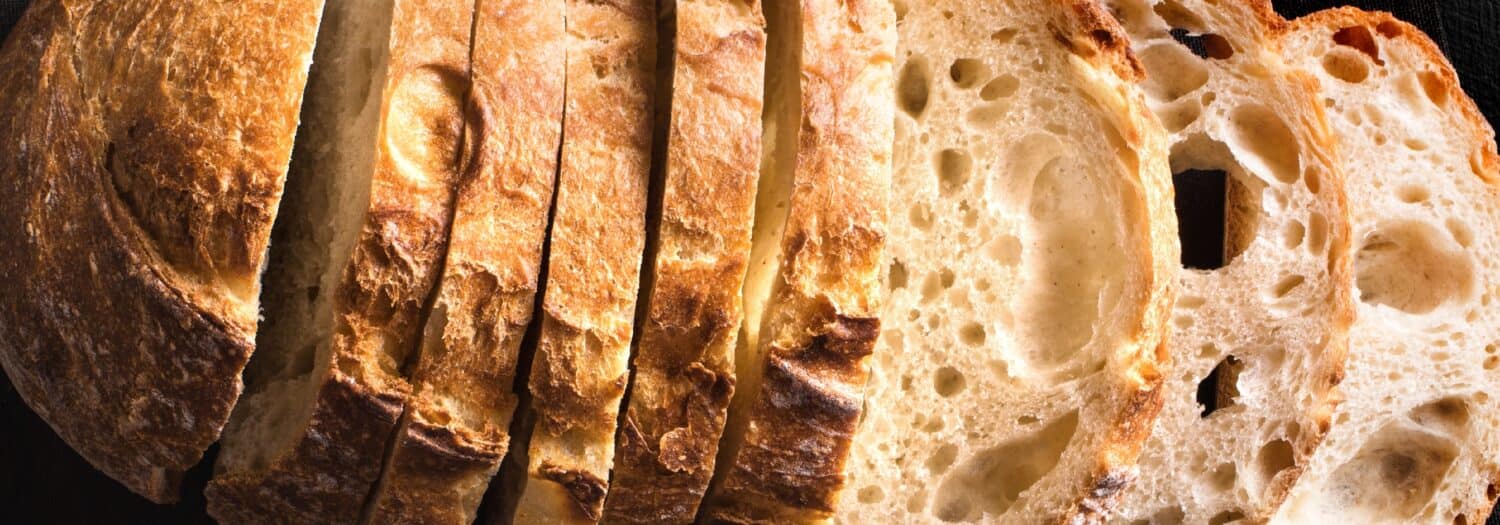With the recent popularity of artisanal and whole-food breads, sourdough bread has also become more popular. During the pandemic years, when people began baking bread as a hobby, sourdough bread was a great choice because it has few ingredients and doesn't require any specialized cooking appliances. It also looks really great in photographs, which led to its popularity on social media. Sourdough's reputation as a healthier bread option also contributed to its popularity. But how healthy is sourdough, really?
What Exactly Is Sourdough Bread?
Sourdough bread has a tangy, sour taste and a thick, chewy crust. However, depending on the ingredients, such as wheat flour or herbs and spices, sourdough bread may taste more savory or slightly nutty. The fermentation process that creates sourdough adds more distinctiveness to this bread. No two loaves of sourdough bread taste alike.
Sourdough bread has three main ingredients: flour, water, and salt. Sourdough starter, a live fermented culture made of wild yeast and lactic acid, is added to the ingredients instead of commercial yeast. It typically takes seven to fourteen days to create the sourdough starter. Once properly fermented, some of the starter is added to bread dough to make it rise during baking. Many people make their own sourdough starter at home because it is a relatively simple process.

Unlike commercial yeast, sourdough starter contains fermented yeast and lactic acid.
©Zagorulko Inka/Shutterstock.com
What Does Research Say About Sourdough Bread's Healthiness?
According to Eating Well magazine, sourdough bread is the third healthiest choice of bread behind sprouted-grain and whole-wheat bread. Research suggests that sourdough has a lot of “good” bacteria that aid in healthier digestion. They also cite sourdough bread as the best choice for gut health not only because of the good bacteria but also because of the forms of fiber the bread contains.
For those who suffer from intestinal issues like irritable bowel syndrome, gas, or bloating, sourdough bread is easier on the gut than other types of bread. The fermentation process means there are fewer fructans (a type of carbohydrate) in the bread, known to be especially triggering for those with IBS.
Sourdough also has more acetic and lactic acids, which are known to slow down the digestion of carbohydrates. This slower digestion process is why sourdough has a lower glycemic index, which is a measurement of how high your blood sugar levels go after eating food. Furthermore, sourdough is also a good bread choice for those with gluten sensitivities because it has less gluten than other breads.
Sourdough Bread Nutritional Breakdown
If you eat a medium slice of sourdough bread, about two ounces, the nutritional breakdown is as follows.
| Calories | 84 |
| Fiber | 1g |
| Protein | 3g |
| Fat | 1g |
| Salt | 187g |
| Carbohydrates | 16g |
Overall, sourdough bread provides essential nutrients, such as healthy carbohydrates, protein, fiber, iron, and vitamins. It has more nutritional value than other breads. So, yes, sourdough is a healthy choice.
However, while low in gluten, sourdough bread is not gluten-free. While it is easier for those with gluten allergies to digest, if you have celiac disease or a gluten allergy, you may still want to avoid sourdough bread made with wheat or rye. A healthier option for making sourdough bread at home is to use minimally processed or whole-grain flour.
It is also important to note that not all store-bought sourdough bread is the same. Some bakeries no longer make the starter with traditional methods because it takes a long time. Instead, they use an acidic flavor, often vinegar, to speed up the leavening process. Without the long fermentation method, the microbes that make sourdough healthier do not have time to work their magic. So, some store-bought brands are less nutritious than traditionally made sourdough bread.
To find authentically made sourdough bread, it is best to read reviews and research. Alternatively, you can make your own sourdough bread.

To ensure you purchase authentically made sourdough, consult bakery reviews and consumer reports.
©Daisy Daisy/Shutterstock.com
How to Make Sourdough Bread at Home
The key thing to remember when making sourdough bread is to make the starter in advance. There are many sourdough starter and sourdough recipes available online. Furthermore, sourdough starters can be made in about five minutes. However, you can also buy them online if you want to skip that step.
Here is simple step-by-step guide.
- Make a sourdough starter seven to fourteen days beforehand. (However, some bakers say five days is enough for your starter.)
- Feed your starter daily.
- When you are ready to make your bread, mix part of the starter with flour and water. Add salt after the mixture has rested for a few hours.
- After folding the dough a few times, let it rest again for ten to thirty minutes. Repeat this process until the dough becomes stretchy. It will also feel smooth.
- Allow the dough to rise at room temperature until it doubles in size.
- After shaping your sourdough loaf, bake it in a Dutch oven.
- Cool the bread for two to three hours before eating.
Baking sourdough bread does require patience because it is a lengthy process. However, it has simple ingredients, and the steps are relatively easy to follow.

One of the reasons sourdough bread is spiking in popularity is because it is easy to make at home.
©David9182/Shutterstock.com
In Summary
Not only is sourdough one of the top three healthiest bread options, but it is also a healthy choice in general. Its healthiness is primarily due to the fermentation process that creates the bread and destroys the acid found in other breads. As a result, sourdough bread contains more magnesium and potassium than other bread choices.
Additionally, it contains more antioxidants. Moreover, sourdough does not cause a spike in blood sugar like other breads. Finally, it is much easier on the gut and digestive system because it contains “good” bacteria.
While the bread is not gluten-free, it is lower in gluten than other bread types. Moreover, sourdough can be made with various flour types, so avoiding rye and wheat flour is another option for those with gluten allergies. If you want a delicious yet healthy bread, sourdough is an excellent choice.
The image featured at the top of this post is ©Oksana Mizina/Shutterstock.com

